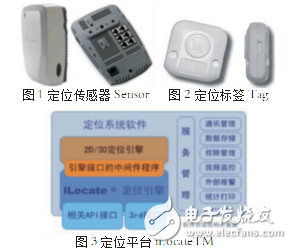UltraWideband (UWB), also known as pulse radio, dates back to the 19th century. UWB is still in dispute so far. UWB modulation uses fast rising and falling pulses with a pulse width of ns. The spectrum covered by the pulse is from DC to GHz. It does not require the RF frequency conversion required for conventional narrowband modulation. After pulse shaping, it can be sent directly to the antenna for transmission. The pulse peak-to-peak time interval is on the order of 10-100 ps. The spectral shape can be adjusted by a very narrow continuous single pulse shape and antenna load characteristics. The UWB signal is sparsely distributed on the time axis, its power spectral density is quite low, and RF can simultaneously transmit multiple UWB signals. The UWB signal is similar to the baseband signal and can be OOK, entropy keying, pulse amplitude modulation or pulse position modulation. Unlike conventional wireless systems that convert baseband signals into radio frequency (RF), UWB can be viewed as a baseband propagation scheme over RF that achieves a data rate of 100 Mb/s at very low spectral densities in buildings.
To further increase the data rate, UWB uses an ultra-short baseband rich GHz-level spectrum, using the In-triguing Signaling Method. Based on the broad spectrum of UWB, FCC announced in 2002 that UWB can be used for precision ranging, metal detection, next-generation WLAN and wireless communications. To protect the GPS, navigation and military communications bands, UWB is limited to 3.1-10.6 GHz and below 41 dB transmit power.
UWB wireless communication is a method of communication using a pulse with a very short time interval (less than 1 ns) without using a carrier. It is also called Impulse Radio, Time Domain (TImeDomain) or Carrierless (Carrier Free) communication. Compared with the ordinary binary phase shift keying (BPSK) signal waveform, the UWB method does not use the cosine wave for carrier modulation and transmits many pulses less than 1 ns. Therefore, this communication method occupies a very wide bandwidth and is due to the power density of the spectrum. Small, it has the characteristics of usual spread spectrum communication.
UWB can achieve data transmission rates of hundreds of Mbit/s to several Gbit/s in a range of about 10 meters by transmitting extremely low power signals over a wide spectrum. UWB has many advantages such as strong anti-interference performance, high transmission rate, wide bandwidth, low power consumption, small transmission power, etc. It is mainly used in indoor communication, high-speed wireless LAN, home network, cordless telephone, security detection, position measurement, radar, etc. field.
Introduction to 2UWB positioning principle2.1UWB positioning algorithm
At present, wireless positioning technology refers to a positioning algorithm. At present, the most commonly used measurement methods and calculation methods for determining the position of mobile users are: time difference positioning technology, signal arrival angle measurement (AOA) technology, time of arrival (TOA) and time difference of arrival (TDOA). Among them, TDOA technology is currently the most popular one. In addition to being used in GSM systems, it is also widely used in other systems such as AMPS and CDMA. UWB positioning is also used in this technology. At present, the UWB positioning system can also provide 3D positioning function. This positioning system adopts two positioning algorithms of TDOA and AOA, and has achieved the effect of 3D positioning.
2.2 system composition
The Ubisense UWB precision positioning system consists of three components: a sensor sensor, an active positioning tag tag and a positioning platform iLocateTRM. In this system, the positioning tag tag uses the uwb pulse signal to transmit position information to the sensor sensor, and the sensor adopts TDOA after receiving the signal. The tag position is analyzed with the AOA positioning algorithm and finally transmitted to the iLocate server via wired Ethernet. The iLocateT-MUWB positioning unit can realize seamless cellular connection, and the positioning space can be expanded indefinitely. The positioning label can walk freely in each unit, and the positioning target is truly displayed by the virtual dynamic three-dimensional effect through the positioning platform software analysis. The system is stable to a 3cm positioning accuracy of 15cm in a traditional application environment.

4500 puffs disposable vape pen are so convenient, portable, and small volume, you just need to take them
out of your pocket and take a puff, feel the cloud of smoke, and the fragrance of fruit surrounding you. It's so great.
We are China's leading manufacturer and supplier of disposable vape puff bars, 4500 puffs vape bar,4500 puff disposable vape,4500 puffs vape mod,
rechargeable vape 4500 puffs,4500 puffs vape stick, and e-cigarette kit, and we specialize in Disposable Vapes, e-cigarette vape pens, e-cigarette kits, etc.
4500 puffs vape bar,4500 puff disposable vape,4500 puffs vape mod,rechargeable vape 4500 puffs,4500 puffs vape stick
Ningbo Autrends International Trade Co.,Ltd. , https://www.ecigarettevapepods.com
![<?echo $_SERVER['SERVER_NAME'];?>](/template/twentyseventeen/skin/images/header.jpg)